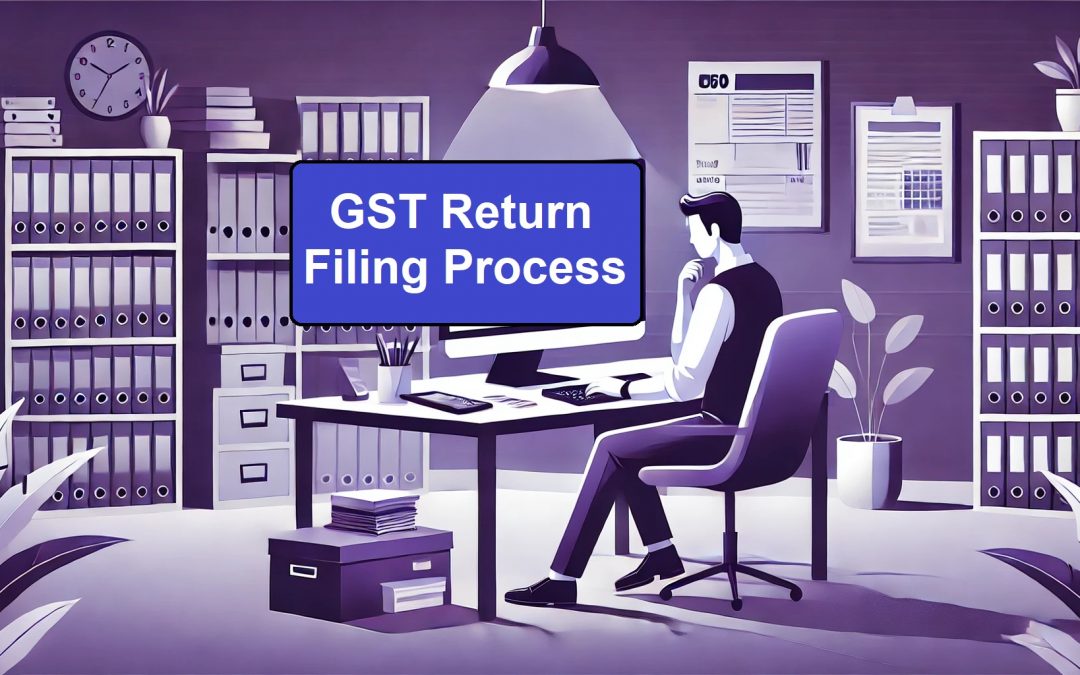GST Return Filing Process Explained (2025 Updated)
Navigating GST compliance in 2025 can feel overwhelming for many business owners, especially with new rules and stricter deadlines coming into force. Here’s a humane, step-by-step guide to help you understand how to file GST returns online—along with updated due dates, rule changes, and penalties, so you can stay stress-free and compliant.
Why GST Return Filing Matters
Filing GST returns ensures transparency in your business and lets you rightfully claim input tax credits (ITC). Missed filings not only cost money—they can jeopardize your business reputation and cause you to lose ITC permanently from July 2025.
2025 GST Compliance: Key Updates
-
New Rule (from July 1, 2025):
-
You cannot file a GST return that is more than 3 years overdue. After the 3-year window closes, the GST portal will permanently block return filing for that period. Don’t risk permanent ITC or legal loss.
-
-
Non-editable GSTR-3B: GSTR-3B becomes non-editable after submission—double-check before filing.
Step-by-Step: GST Return Filing Process Online
1. Gather and Reconcile Your Data
-
Collect all sales invoices, purchase bills, expense records, and GST payments.
-
Reconcile this data with your accounting software and the auto-drafted GSTR-2B for ITC verification.
2. Log in to the GST Portal
-
Visit gst.gov.in, enter your GSTIN, username, password, and captcha to log in.
3. Navigate to Returns Dashboard
-
Go to “Services” > “Returns” > “Returns Dashboard”.
-
Select the relevant financial year and filing period.
4. Choose and Prepare the Correct Return Form
-
Common returns: GSTR-1 (sales), GSTR-3B (summary/payment), GSTR-4 (for composition scheme), GSTR-9/9C (annual).
-
Click “Prepare Online,” fill in the details, save, and review carefully.
5. Offset Liability & Pay Tax (If Due)
-
Check cash and credit (ITC) balances, offset any outstanding liability, and pay using the portal.
6. Submit and File the Return
-
After reviewing, use a Digital Signature Certificate (DSC) or Electronic Verification Code (EVC) to complete the filing.
7. Download Acknowledgement
-
Save your Return Filing Reference Number (ARN) and confirmation for your records.
Important GST Return Due Dates (2025)
| GST Return | Description | Typical Due Date |
|---|---|---|
| GSTR-1 | Outward supplies (sales) | 11th of next month |
| GSTR-3B | Monthly summary & payment | 20th of next month, or 22nd/24th for quarterly QRMP |
| CMP-08 | Comp. scheme quarterly payment | 18th after quarter |
| GSTR-4 | Annual for composition taxpayers | 30th April (annual) |
| GSTR-9/9C | Annual return/reconciliation | 31st December (annual) |
Always check the GST portal or a GST calendar for any government-announced extensions.
Penalties & Late Fees for GST Returns (2025)
-
Late fee: ₹50 per day (₹25 CGST + ₹25 SGST); for NIL returns, ₹20 per day (max: ₹10,000 per return).
-
Interest: 18%/year on unpaid tax.
-
Wrong/Incorrect Filing: Penalties up to 100% of tax, and possible further legal action.
-
Missed 3-year Window: Permanent loss of filing rights and ITC for that period.
-
Failure to Register: Penalty of at least ₹10,000, risk of GSTIN suspension.
Pro Tips for Smooth GST Return Filing
-
Set monthly reminders for all due dates to avoid late fees and ITC loss.
-
Cross-check auto-populated and manual data before submitting your return, especially with new non-editable GSTR-3B rules.
-
File even NIL returns (no sales/purchases) to avoid piling up penalties.
-
Act promptly on notices: If you receive any GST portal notice, respond by the deadline.
-
Seek professional help if your filings are complex, especially for annual and reconciliation returns.
Conclusion
GST compliance is evolving, but filing your GST returns needn’t be a burden. With a systematic approach and awareness of 2025’s new rules, you can file on time, minimize errors, and enjoy uninterrupted business operations (and ITC claims!). A few mindful steps each month set your business free from avoidable penalties—so you can focus on growth and innovation.
Visit - https://filingworld.in/
#filingworld
